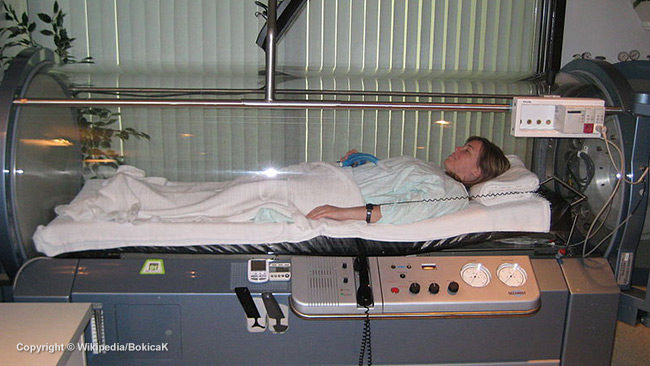The much talked about treatment “Hyperbaric Oxygen Therapy (HBOT)” is used for the treatment of several medical conditions. While in case of certain medical conditions, HBOT has been approved by the FDA as their treatment, while for others, the FDA hasn’t approved it as a treatment.
If you are someone who has been prescribed HBOT by a doctor for a medical condition, there are several things that you may want to know about the therapy. This post answers some of the Frequently Asked Questions about HBOT:
1. What is HBOT?
HBOT (Hyperbaric Oxygen Therapy) is a treatment that improves the natural healing process of the body through breathing of 100% oxygen within an enclosed chamber, called the Hyperbaric Chamber. The atmospheric pressure is heightened and controlled in this chamber. HBOT is employed for various types of treatments, generally as part of a medical care plan.
In normal conditions, only the red blood cells transport oxygen in the entire body. However, HBOT helps oxygen to dissolve in the body’s all fluids, fluids of the central nervous system, the plasma, the bone, and the lymph. The therapy helps in transportation of oxygen to regions where the circulation is blocked or diminished. This allows extra oxygen to reach all the damaged tissues, letting the body support its own process of healing. The boosted oxygen significantly enhances the capability of the white blood cells in killing bacteria, lessens swelling and generates new blood vessels faster in the areas affected. HBOT is a painless, non-invasive and simple treatment.
2. What benefits does HBOT provide?
It’s known from long back that many regions of the body cannot be healed if appropriate oxygen level is not there in the tissue. Many injuries and illnesses take place, and often linger at tissue or cellular level. In cases like strokes, non-healing wounds, and circulatory issues, the damaged region does not get sufficient oxygen, and the natural ability of the body to heal doesn’t work properly. HBOT supplies this additional oxygen naturally, and the side effects due to the therapy are minimal.
With HBOT, the patient’s quality of life is improved in various ways, where standard medicine doesn’t work. HBOT has resulted in beneficial effects for several conditions like chronic fatigue, head injuries, cerebral palsy, and stroke.
3. Which conditions are treated by HBOT?
Hyperbaric Oxygen Therapy is employed for the treatment of all medical conditions that benefit from the availability of enhanced tissue oxygen. The therapy is also used for the treatment of infections, where the therapy can be employed for its antibiotic characteristics, either in the form of the primary treatment, or accompanied with other types of drugs.
The conditions listed below are considered by Medicare and Insurance for payment coverage when treated using HBOT:
-
Thermal Burns
-
Skin Grafts and (Compromised) Flaps
-
Osteomyelitis (Refractory)
-
Osteoradionecrosis and Radiation Tissue Damage
-
Necrotizing Soft Tissue Infection
-
Intracranial Abscess
-
Gas Gangrene
-
Exceptional Blood Loss (Anemia)
-
Diabetic and Selected Wounds
-
Decompression Sickness (Bends)
-
Crush Injury/Compartment Syndrome/Other Traumatic Ischemias
-
Carbon Monoxide Poisoning
-
Air or Gas Embolism
The off-label conditions that Medicare or insurance may not or may cover when treated using HBOT, are as follows:
-
Traumatic Brain Injury
-
Stroke
-
Sports Injuries
-
Autism
-
Recovery from Plastic Surgery
-
Near Drowning
-
Multiple Sclerosis
-
Migraine
-
Lyme Disease
-
Cerebral Palsy
4. What kind of preparation is needed for the treatment?
Patients are allowed inside the hyperbaric chamber with only clean clothing made of cotton. The technician should be aware of whether the patient is taking any medications, which include non-prescription drugs. It’s recommended that patients should not take carbonated drinks or alcohol for 4 hours before the treatment. Mostly, patients should leave smoking or taking any other types of tobacco products during the treatment tenure, since they reduce the ability of the body to transport oxygen.
5. In what way is HBOT administered?
The administration of HBOT is done within a monoplace, state-of-the-art clear acrylic chamber, in private setting. This enables the trained technician to monitor the patient closely, and also lets the patient easily see outside the hyperbaric chamber. Constant communication and view is maintained between the attending technician and patients through an intercom. Patients may simply rest, listen to music or watch movie inside the chamber.
6. Is HBOT safe enough?
HBOT is always prescribed by a doctor or physician, and is administered under complete medical supervision. Although minor risks are there like all kinds of medical treatments, however, HBOT is overall extremely safe. The risks of the therapy would be discussed with you, prior to your signing your consent form for the therapy.
7. Does HBOT have any side effects?
The mostly seen side effect of HBOT is barotrauma to ears, and sinuses due to pressure change. For reducing the risk, patients can learn methods to clear the ears adequately at the time of compression, or tubes can be put inside the ears. Vision changes may be experienced by some patients during the treatment period. Such changes are generally temporary and minor. Oxygen toxicity is a rarely seen side effect that happens if too much of oxygen is administered.
8. What details do technicians need to be aware of from the patients’ side before administering HBOT?
-
Do you have symptoms of flu or cold, nasal congestion or sinus, chest congestion, or fever
-
Is there any possibility of your being pregnant
-
Has any change been made in your medications
-
Whether you have skipped meal or not before the treatment
-
Whether you are diabetic or not and whether or not you have taken your insulin before the treatment
-
Do you have anxiety or any concerns
Individuals about to undergo HBOT may find that some of the queries they have regarding the therapy, are mentioned in this list. If you have further questions or doubts, your doctor would be the best person to answer your questions.





